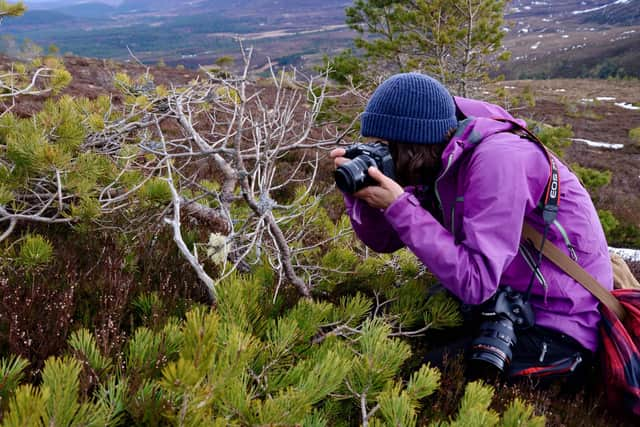A red nose is not Rudolph the reindeer's only special power to help guide him through the snow
But he is not the only reindeer with superpowers.
Dasher, Prancer, Donner and Blitzen – and all the rest of their species – have very special eyes that could make the difference between life and death in the snowy conditions of the North Pole.
Reindeer eyes are a golden-orange colour in summer, but come winter they change to a rich blue tone – the only daytime mammals to show this.
Advertisement
Hide AdAdvertisement
Hide AdWhile this colour-change likely helps them to see in the permanent twilight of winters in the far north, it also allows their eyes to transmit ultraviolet (UV) light.
But the trait has been bothering scientists, because it is especially risky to have UV-sensitive eyes in snowy conditions since sunlight reflects off the white stuff, resulting in a double dose of potentially damaging light.
Now a team of researchers from the US and Scotland believe they have solved the conundrum after fieldwork in the Cairngorm mountains, where herds of reindeer roam free.


A new study by Professor Nathaniel Dominy, Charles Hansen professor of anthropology at Dartmouth College in New Hampshire, and Dr Catherine Hobaiter and Professor Julie Harris, both from the School of Psychology and Neuroscience at the University of St Andrews, has shown this specialist night vision helps the animals find their favourite food – and it’s not mince pies.
As well as colour-changing eyes, reindeer have picky dining habits.
They have a strong preference for a particular species of lichen, known as reindeer moss, which is essential to their survival in harsh, freezing winters.
It had previously been suggested that UV vision might help highlight lichens against a snowy landscape, but initial testing did not find much evidence.


However, reindeer moss itself had never been analysed. Until now.
Advertisement
Hide AdAdvertisement
Hide AdDr Hobaiter said: “One of the amazing things about Scotland is that we have some of the richest lichen diversity in the world: the Highlands host over 1,500 different species, and the Cairngorms are home to a local herd of reindeer, reintroduced to Scotland after being hunted to extinction.
“So Scotland is the perfect place to try and finally solve the mystery.”
The researchers went out in the hills in search of lichen beds, then photographed them under UV light.
Their findings revealed that different lichens absorb or reflect the light differently – with reindeer moss a strong absorber.
So while Rudolf’s red-nose can light the way for Santa, his blue eyes help him find dinner after a long night.
“To our eyes, just like for most mammals, pale lichen in white snow is incredibly hard to spot,” Dr Hobaiter said.
“But to reindeer eyes the species they need to feed on would stand out as dark patches in the much more reflective snowy landscape.”
Professor Dominy added: “If you can put yourself in their hooves, looking at this white landscape, you would want a direct route to your food.
Advertisement
Hide AdAdvertisement
Hide Ad“Reindeer don’t want to waste energy wandering around searching for food in a cold, barren environment.
“If they can see lichens from a distance, that gives them a big advantage, letting them conserve precious calories at a time when food is scarce.”
Comments
Want to join the conversation? Please or to comment on this article.